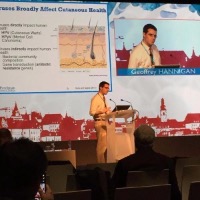Mar 11, 2016
- HANNIGAN GD1,
- GRICE EA1,
- ET AL.1
- 1DEPARTMENT OF DERMATOLOGY UNIVERSITY OF PENNSYLVANIA
- VERVE Net
- Club Grice

External link: http://mbio.asm.org/content/6/5/e01578-15.full
Protocol Citation: HANNIGAN GD, GRICE EA, ET AL. 2016. Script R13: OPF and AMG Analysis. protocols.io https://dx.doi.org/10.17504/protocols.io.ejkbckw
Manuscript citation:
Kindler L, Stoliartchouk A, Teytelman L, Hurwitz BL, Method-centered digital communities on protocols.io for fast-paced scientific innovation. F1000Research doi: 10.12688/f1000research.9453.2
License: This is an open access protocol distributed under the terms of the Creative Commons Attribution License, which permits unrestricted use, distribution, and reproduction in any medium, provided the original author and source are credited
Protocol status: Working
Created: February 16, 2016
Last Modified: November 09, 2017
Protocol Integer ID: 2380
Abstract
This protocols outlines our definitions of core operational protein families (OPFs), potential auxiliary metabolic genes (AMGs), sharing of genes across anatomical sites, and Bray-Curtis dissimilarity of the OPFs by anatomical site. Based on methods from the following publication:
Hannigan, Geoffrey D., et al. "The Human Skin Double-Stranded DNA Virome: Topographical and Temporal Diversity, Genetic Enrichment, and Dynamic Associations with the Host Microbiome." mBio 6.5 (2015): e01578-15.
Guidelines
sessionInfo()
## R version 3.2.0 (2015-04-16)
## Platform: x86_64-apple-darwin13.4.0 (64-bit)
## Running under: OS X 10.10.4 (Yosemite)
## ## locale:
## [1] en_US.UTF-8/en_US.UTF-8/en_US.UTF-8/C/en_US.UTF-8/en_US.UTF-8
##
## attached base packages:
## [1] stats graphics grDevices utils datasets methods base
##
## loaded via a namespace (and not attached):
## [1] magrittr_1.5 formatR_1.2 tools_3.2.0 htmltools_0.2.6
## [5] yaml_2.1.13 stringi_0.4-1 rmarkdown_0.7 knitr_1.10.5
## [9] stringr_1.0.0 digest_0.6.8 evaluate_0.7
Before start
Load the required R packages.
Command
Expected result
## [1] '1.0.1'
Expected result
## [1] '2.3.0'
Expected result
## [1] '1.0.1'
Expected result
## [1] '0.3.35'
Import the needed data files and quantify the number of core operational protein families. Also write the names of the core OPFs so that I can query them and identify them after subsetting the input files.
Command
Keep only those columns with values matching these found in the mapping file subset. This will get rid of the locations we are not evaluating.
Command
From here you can go to the diversity calculations below.
Command
Write the names of the core protein clusters so that I can pull out the fasta sequences and query them against UniProt.
Command
Determine how many genes are core to sites by location type.
Command
Expected result
## [1] "Sebaceous"
## [1] 25
## [1] "Moist"
## [1] 15
## [1] "Intermittently_Moist"
## [1] 38
See number of core protein clusters by site.
Command
Expected result
## [1] "Occluded"
## [1] 15
## [1] "Exposed"
## [1] 24
## [1] "Intermittently_Occluded"
## [1] 174
Try again for all of the different anatomical groups for plotting.
Command
Expected result
## [1] 72 114 64 494 41 15 45 174
Plot the protein cluster count.
Command
Expected result
Finally we calculated the diversity of ORFs by different anatomical sites. Transpose the input file.
Command
Visualize the distance matrix using NMDS.
Command
Expected result
## Run 0 stress 0.142143
## Run 1 stress 0.1460666
## Run 2 stress 0.1438215
## Run 3 stress 0.1435173
## Run 4 stress 0.1408786
## ... New best solution
## ... procrustes: rmse 0.03486057 max resid 0.3573651
## Run 5 stress 0.1429197
## Run 6 stress 0.1436577
## Run 7 stress 0.1439074
## Run 8 stress 0.1473716
## Run 9 stress 0.1443224
## Run 10 stress 0.1431153
## Run 11 stress 0.147699
## Run 12 stress 0.1447852
## Run 13 stress 0.1427725
## Run 14 stress 0.1455643
## Run 15 stress 0.1470337
## Run 16 stress 0.1446069
## Run 17 stress 0.1431871
## Run 18 stress 0.1442179
## Run 19 stress 0.146792
## Run 20 stress 0.1463412
Expected result
## [1] 0.1408786
Plot the data.
Command
Expected result
Plot by occlusion site status.
Command
Expected result
